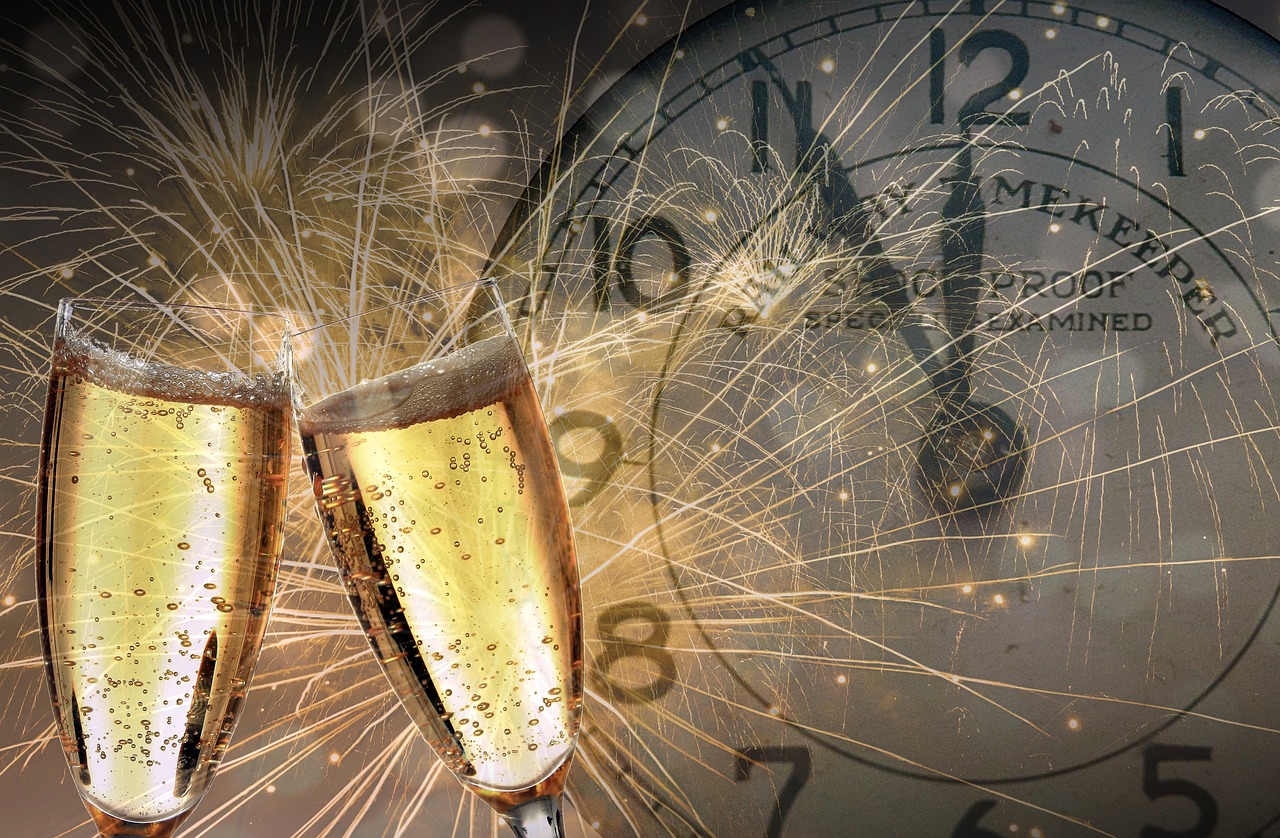This article explores the delightful world of sparkling wines, highlighting various types, occasions, and recommendations to help you choose the perfect bubbly for any celebration or gathering. Sparkling wines are not just beverages; they are experiences that can elevate moments, making them memorable and joyous.
What is Sparkling Wine?
Understanding sparkling wine is essential to appreciate its unique characteristics and varieties. Sparkling wine is defined by its effervescence, which is created through natural fermentation processes. There are several methods of production, including the traditional méthode champenoise and the Charmat method, each contributing to distinct flavor profiles and textures. Sparkling wines can range from sweet to dry, and they can be made from various grape types, offering a wide spectrum of aromas and tastes.
Types of Sparkling Wines
Sparkling wines come in various styles, each with distinct flavors and aromas. Here are some popular types:
- Champagne: The quintessential sparkling wine from the Champagne region of France, known for its complex flavors and fine bubbles.
- Prosecco: An Italian favorite, Prosecco is often lighter and fruitier, making it a great choice for casual gatherings.
- Cava: This Spanish sparkling wine offers great value and unique flavor profiles, often characterized by its earthy notes.
Champagne: The Classic Choice
Champagne is often synonymous with celebration. It has a rich history dating back to the 17th century and is produced under strict regulations in the Champagne region. The production process involves primary fermentation, followed by secondary fermentation in the bottle, which creates its signature bubbles. Choosing Champagne for your celebrations can elevate the experience due to its prestige and flavor complexity.
Prosecco: The Lively Alternative
Prosecco has gained popularity as a refreshing and affordable sparkling wine. Known for its fruity and floral notes, it is typically less expensive than Champagne and is perfect for casual settings. Prosecco’s versatility makes it suitable for a variety of occasions, from brunch to festive celebrations.
Cava: Spain’s Hidden Gem
Cava offers a unique alternative to traditional sparkling wines. This Spanish gem is produced using the same traditional method as Champagne but at a more accessible price point. Cava is characterized by its crisp acidity and complex flavors, making it a fantastic choice for both casual gatherings and formal events.
Choosing the Right Sparkling Wine for Your Occasion
Selecting the perfect sparkling wine can enhance any event. Consider the nature of the occasion, the preferences of your guests, and the food being served. For formal events, Champagne might be the go-to choice, while Prosecco or Cava could be ideal for more relaxed settings. Understanding the flavor profiles of each type will help in making an informed decision.
Pairing Sparkling Wine with Food
Food pairing can significantly enhance the tasting experience. Here are some pairing suggestions:
- Champagne: Pairs well with seafood, fried foods, and rich cheeses.
- Prosecco: Complements light appetizers, salads, and fruit-based desserts.
- Cava: Works beautifully with tapas, grilled meats, and spicy dishes.
Serving Tips for Sparkling Wine
Proper serving can elevate the enjoyment of sparkling wine. The optimal serving temperature for most sparkling wines is between 45°F and 50°F. Use flute glasses to enhance the bubbles and aroma. When serving, pour slowly to maintain the effervescence, and consider garnishing with fruits or herbs for added flair.
Popular Sparkling Wine Brands to Consider
Numerous brands offer exceptional sparkling wines. Some of the most reputable producers include:
- Moët & Chandon: Known for their classic Champagne.
- La Marca: A popular Prosecco brand celebrated for its quality.
- Freixenet: Renowned for its Cava and diverse offerings.
Sparkling Wine Trends to Watch
The world of sparkling wine is ever-evolving. Emerging trends include organic and low-sugar sparkling wines, appealing to health-conscious consumers. Organic sparkling wines are produced without synthetic pesticides or fertilizers, while low-sugar options cater to those looking to enjoy bubbly without the extra calories.
Organic and Biodynamic Sparkling Wines
Sustainability is becoming increasingly important in winemaking. Organic and biodynamic sparkling wines are gaining traction, offering not only environmental benefits but also unique flavor profiles that reflect their terroir. Many producers are embracing these methods, appealing to a growing market of eco-conscious consumers.
Low-Sugar Sparkling Options
Health-conscious consumers are seeking low-sugar alternatives. The demand for low-sugar sparkling wines is on the rise, with many brands responding by creating delicious options that don’t compromise on taste. These wines allow consumers to enjoy the festive experience of bubbly without the guilt.
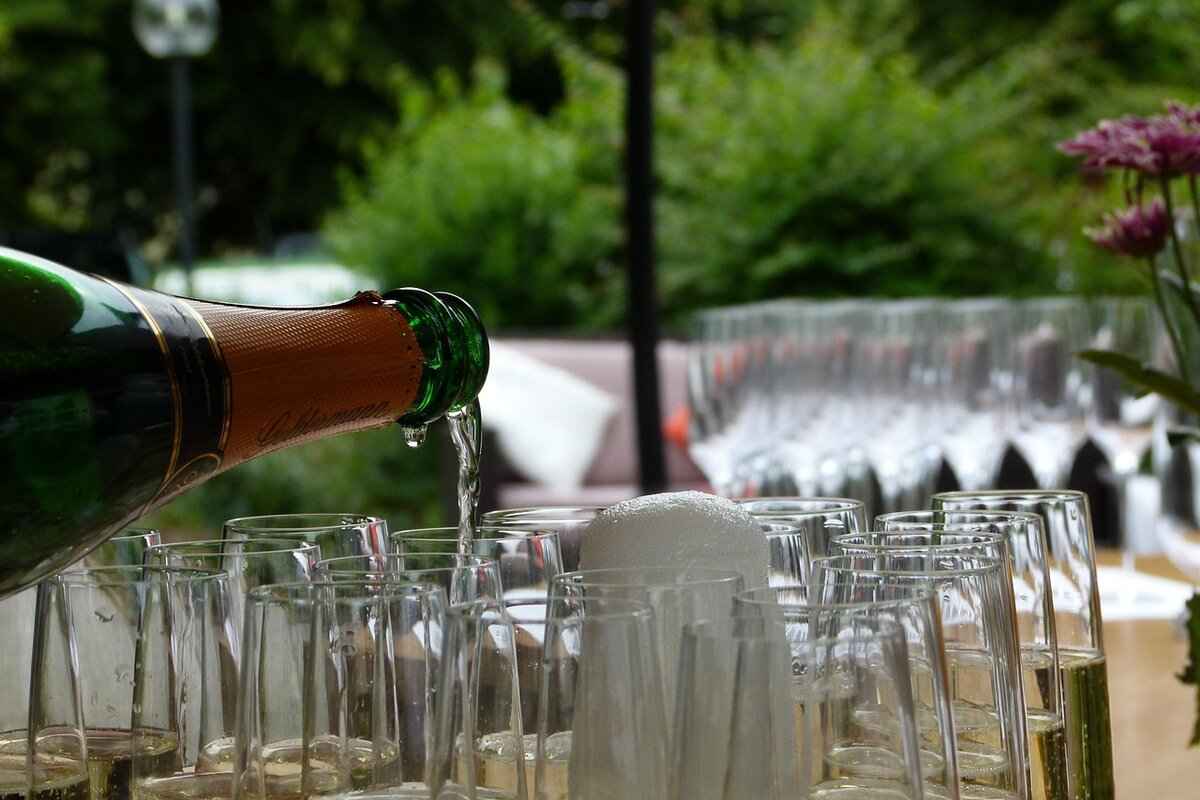
What is Sparkling Wine?
Understanding sparkling wine is essential for anyone looking to appreciate its unique characteristics and diverse varieties. Sparkling wine is defined as any wine that contains significant levels of carbon dioxide, which creates bubbles and a characteristic effervescence. This effervescence can be achieved through various production methods, resulting in a wide array of flavor profiles and styles.
- Definition: Sparkling wine is a type of wine that is carbonated, giving it a bubbly texture. The bubbles are produced either naturally through fermentation or artificially by injecting carbon dioxide.
- Characteristics: The defining feature of sparkling wine is its bubbles, which can vary in size and intensity. The aroma and flavor can range from fruity and floral to nutty and yeasty, depending on the wine’s production method and grape variety.
- Varieties: Sparkling wines can be made from a variety of grapes, including Chardonnay, Pinot Noir, and Prosecco. Each grape contributes its unique characteristics to the final product.
Production Methods of Sparkling Wine
There are several methods of producing sparkling wine, each influencing the final taste and texture of the wine. The most prominent methods include:
| Method | Description |
|---|---|
| Traditional Method (Méthode Champenoise) | This method involves a secondary fermentation in the bottle, which creates the bubbles. It is used for high-quality sparkling wines like Champagne. |
| Charmat Method | In this method, fermentation occurs in large tanks instead of individual bottles. This is commonly used for Prosecco and results in a fresher, fruitier wine. |
| Carbonic Maceration | This technique involves fermenting whole grapes in a carbon dioxide-rich environment, producing fruity and aromatic sparkling wines. |
Flavor Profiles of Sparkling Wines
The flavor profiles of sparkling wines can vary widely based on their production methods and grape varieties. For instance:
- Champagne: Typically exhibits complex flavors of brioche, apple, and citrus, with a creamy texture.
- Prosecco: Known for its light, fruity flavors, often featuring notes of pear, green apple, and honeysuckle.
- Cava: Offers a balance of fruity and earthy flavors, often with a nutty finish due to its aging process.
In summary, understanding sparkling wine goes beyond just recognizing its bubbles. By exploring its definition, production methods, and flavor profiles, one can truly appreciate the artistry and diversity that sparkling wines offer. Whether you are celebrating a special occasion or simply enjoying a casual gathering, the right sparkling wine can elevate your experience, making it memorable and delightful.
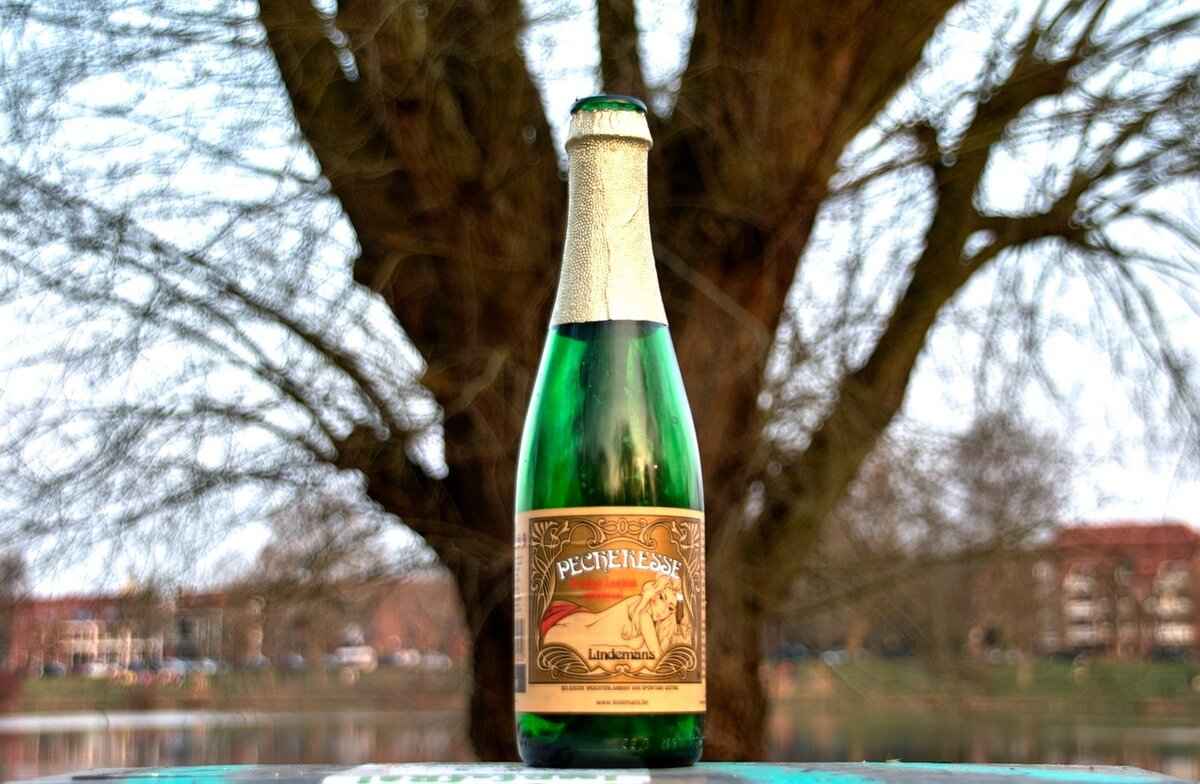
Types of Sparkling Wines
Sparkling wines are a delightful category of wines that are characterized by their effervescence, which can elevate any occasion. They come in a variety of styles, each offering unique flavors and aromas that cater to different palates. Understanding the distinctions among these wines can enhance your experience and help you select the perfect bottle for any event.
- Champagne: This iconic sparkling wine hails from the Champagne region of France. Known for its complex flavors, Champagne is made primarily from three grape varieties: Chardonnay, Pinot Noir, and Pinot Meunier. The meticulous production process, known as méthode champenoise, involves secondary fermentation in the bottle, creating its signature bubbles. Champagne is often associated with celebrations and special occasions, making it a classic choice for toasting.
- Prosecco: Originating from Italy, Prosecco is a lighter and fruitier alternative to Champagne. Made primarily from the Glera grape, this sparkling wine is known for its refreshing taste and lower price point. Prosecco is typically produced using the Charmat method, where fermentation occurs in large tanks rather than individual bottles, resulting in a more straightforward and approachable flavor profile. It’s perfect for casual gatherings and is often enjoyed as an aperitif.
- Cava: Hailing from Spain, Cava offers a unique twist on traditional sparkling wines. Made mainly from indigenous grape varieties such as Macabeo, Xarel·lo, and Parellada, Cava is produced using the same méthode champenoise as Champagne, giving it a similar complexity. It often features notes of apple, citrus, and almond, making it a versatile choice for food pairings. Cava is an excellent option for those seeking quality bubbly without the Champagne price tag.
- Franciacorta: Another Italian sparkling wine, Franciacorta is made using the traditional method and is known for its high-quality production standards. It often rivals Champagne in terms of quality and complexity, with a rich flavor profile that includes notes of brioche, stone fruits, and floral elements. Franciacorta is a great choice for those looking to explore premium sparkling wines from Italy.
- Sparkling Rosé: This delightful variation combines the effervescence of sparkling wine with the fruity and floral notes of rosé. Sparkling rosé can be made from a variety of grape types and is often enjoyed for its versatility. It pairs well with a range of foods and is perfect for summer picnics or outdoor celebrations. Its vibrant color and refreshing taste make it a popular choice among wine enthusiasts.
In conclusion, the world of sparkling wines is rich and diverse, offering something for everyone. From the prestigious Champagne to the approachable Prosecco and the hidden gem Cava, each type brings its unique character to the table. Understanding these differences not only enhances your appreciation of sparkling wines but also empowers you to make informed choices for any occasion.
Champagne: The Classic Choice
Champagne is a sparkling wine that has become synonymous with celebration and luxury. Its origins trace back to the Champagne region of France, where the unique combination of climate, soil, and traditional methods of production contribute to its exceptional quality. This section explores the rich history, intricate production process, and the reasons why Champagne remains a timeless favorite for special occasions.
The History of Champagne
The history of Champagne is as effervescent as the wine itself. The region began producing wine as early as the Roman era, but it wasn’t until the 17th century that the sparkling wine we know today emerged. Initially, the bubbles were considered a flaw, but winemakers soon recognized their appeal. The introduction of the méthode champenoise, or traditional method, in the late 1600s marked a pivotal moment in Champagne production. This technique involves a secondary fermentation in the bottle, which creates the characteristic bubbles that define Champagne.
Production Process of Champagne
The production of Champagne is a meticulous and labor-intensive process. It begins with the harvesting of grapes, primarily Chardonnay, Pinot Noir, and Pinot Meunier. After pressing, the grape juice undergoes primary fermentation, resulting in a still wine. The next step is blending, where winemakers create the perfect cuvée by combining wines from different grapes and vintages. The bottled wine then undergoes secondary fermentation, during which sugar and yeast are added, producing carbon dioxide and creating the bubbles. After aging for a minimum of 15 months, the wine is riddled to remove sediment and finally corked, ready for consumption.
Why Choose Champagne for Special Occasions?
Choosing Champagne for celebrations elevates the experience for several reasons. Firstly, its prestige is unmatched; Champagne is often associated with luxury and sophistication, making it the perfect choice for weddings, anniversaries, and milestone events. Additionally, the complex flavor profile of Champagne, with its notes of fruit, brioche, and minerality, can complement a wide range of foods, enhancing the overall dining experience. Finally, the ritual of opening a bottle of Champagne, complete with the pop of the cork and the effervescent pour, adds an element of excitement and festivity to any gathering.
Champagne and Its Cultural Significance
Beyond its delightful taste and bubbly nature, Champagne holds a significant place in various cultures around the world. It is often used in toasts and celebrations, symbolizing joy and success. In many cultures, the act of sharing a bottle of Champagne is a gesture of goodwill and friendship, making it a staple at gatherings, from casual brunches to formal dinners. The iconic status of Champagne is further solidified by its appearances in films, literature, and art, where it is often depicted as the drink of choice for the elite.
Conclusion
In summary, Champagne is not just a sparkling wine; it is a symbol of celebration, history, and craftsmanship. Understanding its origins, production process, and cultural significance can enhance your appreciation for this classic choice. Whether you are toasting a special occasion or enjoying a quiet evening, Champagne’s unique qualities make it a cherished option for any celebration.
Production Process of Champagne
The production of Champagne is a fascinating journey that transforms grapes into one of the world’s most celebrated sparkling wines. This intricate process, known as méthode champenoise, involves several key stages that contribute to Champagne’s signature effervescence and complex flavor profile. Below, we explore each step in detail.
- Harvesting: The process begins in the vineyards of the Champagne region, where grapes are meticulously harvested. Typically, three grape varieties are used: Chardonnay, Pinot Noir, and Pinot Meunier. The timing of the harvest is crucial, as the grapes must reach optimal ripeness to ensure balanced acidity and sugar levels.
- Primary Fermentation: After harvesting, the grapes are pressed gently to extract the juice. This juice is then fermented in stainless steel tanks or oak barrels, where yeast converts the sugars into alcohol. This initial fermentation lasts about two to three weeks, resulting in a still wine known as base wine.
- Blending: The art of blending is critical in Champagne production. Winemakers taste various base wines from different vineyards and vintages to create a consistent house style. This blend may include wines from previous years, known as reserve wines, to achieve complexity and depth.
- Secondary Fermentation: Once the blend is finalized, a mixture of sugar and yeast, known as liqueur de tirage, is added to the base wine. The wine is then bottled with a temporary cap. Inside the bottle, the yeast ferments the added sugar, producing carbon dioxide, which creates the characteristic bubbles of Champagne.
- Riddling: After secondary fermentation, the bottles undergo a process called riddling (or remuage), where they are gradually tilted and rotated to move the sediment towards the neck of the bottle. This meticulous process can be done manually or with the help of machines.
- Dégorgement: Once the sediment has settled, the neck of the bottle is frozen, and the bottle is turned upside down. The frozen plug of sediment is then removed by quickly uncapping the bottle, allowing the pressure to expel the sediment.
- Dosage: After dégorgement, a mixture of wine and sugar, known as dosage, is added to adjust the sweetness level of the Champagne. This final step determines whether the Champagne will be labeled as Brut, Extra Dry, or Demi-Sec.
- Final Corking and Aging: The bottle is sealed with a cork and wire cage, then aged for a minimum of 15 months for non-vintage Champagne and three years for vintage Champagne. This aging process allows the flavors to develop and mature, creating the rich, complex profiles that Champagne is known for.
The entire process of making Champagne is a testament to the skill and artistry of the winemakers in the Champagne region. Each step, from the careful selection of grapes to the final corking, plays a vital role in creating this luxurious beverage that is synonymous with celebration and joy. Understanding this meticulous production process enhances the appreciation of every sip of Champagne, making it truly special for any occasion.
Why Choose Champagne?
When it comes to celebrating life’s special moments, Champagne stands out as the quintessential choice. Its effervescence and rich history make it a symbol of celebration and joy. This section explores the myriad reasons to select Champagne for your events, highlighting its prestige, flavor complexity, and its versatility across various occasions.
Prestige and Tradition
Champagne carries with it a sense of luxury and exclusivity that few beverages can match. Originating from the Champagne region of France, this sparkling wine is often associated with high-profile events, from royal weddings to New Year’s Eve parties. The meticulous production process, including the renowned méthode champenoise, adds to its allure. This traditional method involves secondary fermentation in the bottle, which creates the signature bubbles that Champagne is celebrated for.
Flavor Complexity
One of the most compelling reasons to choose Champagne is its remarkable flavor profile. Depending on the grape varieties used—such as Chardonnay, Pinot Noir, and Pinot Meunier—Champagne can exhibit a wide range of flavors, from crisp citrus and green apple to toasty brioche and rich almond. This complexity allows it to pair beautifully with a variety of foods, enhancing the overall dining experience. Whether you’re enjoying it with seafood, poultry, or even desserts, Champagne’s versatility makes it suitable for numerous culinary pairings.
Suitability for Various Events
Champagne is not just for extravagant celebrations; its versatility means it can be enjoyed on many occasions. From intimate dinners to large weddings, its presence can elevate any gathering. For example, a simple toast with Champagne can transform a casual get-together into a memorable event. Moreover, its ability to be served in various styles—whether as a welcome drink, during a meal, or as a nightcap—makes it an ideal choice for any setting.
Creating Memorable Moments
Choosing Champagne is about more than just the drink itself; it’s about creating memories. The act of opening a bottle, hearing the pop of the cork, and sharing it with loved ones is a ritual that signifies celebration and togetherness. The effervescence of Champagne adds a festive touch that can uplift the mood of any gathering.
Final Thoughts
In conclusion, selecting Champagne for your celebrations is a choice steeped in tradition and sophistication. Its prestige, flavor complexity, and adaptability to various occasions make it a standout option for those looking to enhance their experiences. Whether you are toasting a milestone or simply enjoying a moment with friends, Champagne elevates the occasion to something truly special.
Prosecco: The Lively Alternative
Prosecco has rapidly become a beloved choice among sparkling wines, particularly for those seeking a refreshing and affordable option. Originating from the picturesque region of Veneto in Italy, Prosecco is primarily made from the Glera grape, which imparts its signature lightness and fruit-forward character. This section delves into the unique characteristics, flavor profile, and the myriad occasions where Prosecco truly shines.
- Characteristics of Prosecco: Prosecco is known for its vibrant bubbles and approachable style. Unlike traditional Champagne, which undergoes secondary fermentation in the bottle, Prosecco is typically produced using the Charmat method. This process allows the wine to retain its fresh and fruity notes, making it an ideal choice for casual sipping.
- Flavor Profile: The flavor profile of Prosecco is often described as fruity and floral. You can expect notes of green apple, honeysuckle, and pear, with a hint of citrus and almond on the finish. This delightful combination makes it versatile for pairing with a variety of foods.
- Occasions to Enjoy Prosecco: Prosecco shines in numerous settings. Whether you’re hosting a brunch, celebrating a milestone, or simply enjoying a sunny afternoon, Prosecco’s lively effervescence enhances any occasion. Its lightness makes it a perfect aperitif, while its fruity character complements a range of dishes.
Why Choose Prosecco?
The appeal of Prosecco lies in its affordability and versatility. Unlike many high-end sparkling wines, Prosecco is accessible without sacrificing quality. It’s perfect for gatherings where you want to offer a delightful wine without breaking the bank. Additionally, its approachable flavor makes it a crowd-pleaser, appealing to both seasoned wine enthusiasts and newcomers alike.
Food Pairing with Prosecco
When it comes to food pairings, Prosecco excels. Its crisp acidity and fruity notes complement a variety of dishes, from light salads and seafood to creamy risottos and even spicy Asian cuisine. Here are some popular pairings:
- Seafood Dishes: Prosecco’s bright acidity cuts through the richness of dishes like grilled shrimp or fried calamari.
- Cheese Platters: Pair it with soft cheeses like Brie or goat cheese, which enhance its fruity notes.
- Light Pasta Dishes: Creamy or pesto-based pastas work wonderfully with Prosecco, balancing flavors beautifully.
Conclusion
In summary, Prosecco stands out as a lively and versatile sparkling wine that can elevate any occasion. Its refreshing character and affordability make it a go-to choice for gatherings, while its delightful flavor profile pairs well with a variety of cuisines. Whether you’re toasting to a special moment or simply enjoying a casual evening with friends, Prosecco is sure to bring a touch of joy and celebration to your glass.
Cava: Spain’s Hidden Gem
Cava, a sparkling wine hailing from the picturesque region of Catalonia, Spain, is often overshadowed by its more famous counterparts like Champagne and Prosecco. However, this delightful bubbly offers a unique experience that deserves recognition. With its distinct production methods, diverse flavor profiles, and versatility, Cava is an excellent choice for both casual gatherings and celebratory events.
Production Methods of Cava
Cava is primarily produced using the traditional method, known as méthode champenoise, which is also used for Champagne. This process involves two fermentations: the first fermentation occurs in stainless steel tanks, where the base wine is created. The second fermentation takes place in the bottle, where sugar and yeast are added to create the signature bubbles.
The aging process is crucial for developing the wine’s complex flavors. Cava must be aged for a minimum of nine months, but many producers opt for longer aging periods to enhance the wine’s characteristics. This aging process allows the wine to develop notes of yeast, brioche, and nuts, contributing to its rich flavor profile.
Flavor Notes of Cava
Cava is known for its refreshing acidity and vibrant fruit flavors. Common tasting notes include green apple, pear, citrus, and stone fruits. The aging process adds depth, introducing flavors such as almond, honey, and toast. The result is a well-balanced wine that can range from dry to slightly sweet, making it suitable for various palates.
One of the unique aspects of Cava is its ability to pair well with a wide array of foods. From seafood to tapas, Cava’s versatility makes it a fantastic choice for any meal. Its crispness complements dishes like grilled fish, paella, or even spicy Asian cuisine.
Why Choose Cava for Your Celebrations?
Cava is an excellent choice for casual gatherings and celebrations for several reasons. First, it offers a high-quality sparkling wine experience at a more accessible price point compared to Champagne. This affordability allows you to serve a delightful bubbly without breaking the bank.
Additionally, Cava’s versatility in flavor and style means it can cater to a diverse range of tastes and preferences. Whether your guests prefer a dry or slightly sweet sparkling wine, Cava has options to satisfy everyone.
Moreover, the cultural significance of Cava adds to its appeal. As a product of Spain, it brings a touch of Mediterranean charm to any occasion. Sharing a bottle of Cava can evoke a sense of celebration and togetherness, making it a perfect addition to gatherings with friends and family.
In summary, Cava stands out as Spain’s hidden gem in the world of sparkling wines. With its unique production methods, diverse flavor notes, and affordability, it is a fantastic choice for any occasion. Whether you’re hosting a casual get-together or a festive celebration, consider reaching for a bottle of Cava to elevate your experience and delight your guests.
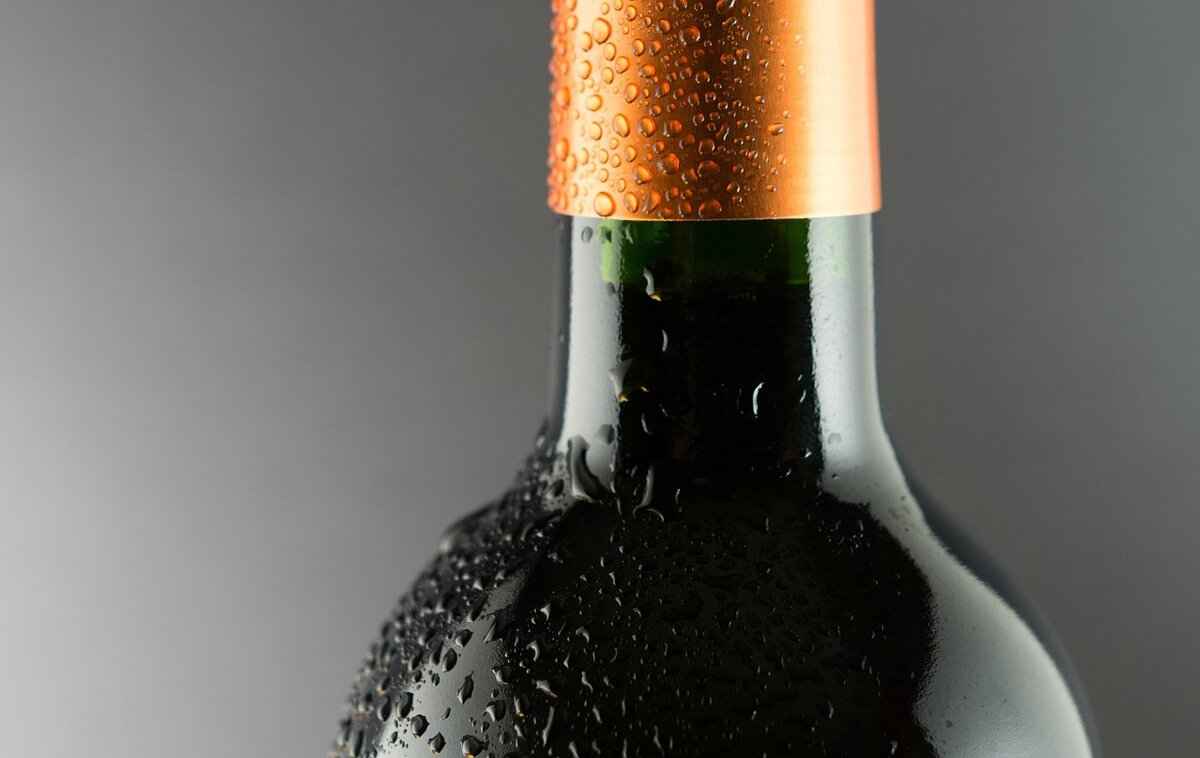
Choosing the Right Sparkling Wine for Your Occasion
Selecting the perfect sparkling wine can truly enhance any event, transforming a simple gathering into a memorable celebration. With a plethora of options available, it’s essential to consider the occasion, guest preferences, and food pairings when making your selection. This guide will help you navigate through the bubbly world of sparkling wines to find the ideal match for your next event.
- Understand the Occasion: Different events call for different types of sparkling wines. For formal celebrations like weddings or anniversaries, Champagne is often the go-to choice due to its prestigious reputation. However, for casual gatherings such as brunches or picnics, a light and refreshing Prosecco may be more suitable.
- Consider Guest Preferences: Knowing your guests’ tastes is crucial. If they enjoy sweeter wines, opt for a Demi-Sec Champagne or a Brut Prosecco. For those who prefer drier options, a Brut Nature or Extra Brut sparkling wine would be ideal.
- Food Pairings: Sparkling wine is incredibly versatile when it comes to food pairings. For example, Champagne pairs beautifully with rich foods like caviar and foie gras, while Prosecco complements lighter dishes such as salads and seafood. Cava, with its earthy notes, works well with tapas and fried foods.
When choosing the right bubbly, think about the following:
- Serving Temperature: Sparkling wines are best served chilled. Aim for a temperature of around 45-50°F (7-10°C) to enhance their refreshing qualities.
- Glassware: The type of glass can influence the tasting experience. Flutes are traditional, but wider glasses like tulip-shaped glasses can allow for better aroma appreciation.
- Presentation: The way you present the wine can add to the overall experience. Consider using an ice bucket for chilling or garnishing with fresh fruit for added flair.
Lastly, don’t forget to explore various brands and producers. Each has its unique offerings, and tasting a few different styles can help you discover what you and your guests enjoy most. Whether it’s a classic Moët & Chandon Champagne or an artisanal Franciacorta, the right choice can elevate your event and create lasting memories.
In summary, choosing the right sparkling wine involves a thoughtful consideration of the occasion, guest preferences, and food pairings. By keeping these factors in mind, you can ensure that your selection not only complements the event but also delights your guests, making for an unforgettable experience.
Pairing Sparkling Wine with Food
When it comes to enhancing your dining experience, food pairing plays a crucial role, especially with sparkling wines. The effervescence and acidity of these wines can complement a variety of dishes, elevating flavors and creating a memorable meal. Understanding how to pair sparkling wines with food can transform an ordinary dinner into an extraordinary culinary adventure.
Here are some expert tips and insights on how to effectively pair different sparkling wines with various cuisines:
- Champagne and Seafood: The classic choice for pairing is Champagne, particularly with seafood. The wine’s high acidity and fine bubbles cut through the richness of dishes like oysters, lobster, and crab. The minerality of Champagne enhances the briny flavors of the ocean, making it a perfect match.
- Prosecco and Light Dishes: Prosecco, known for its fruity and floral notes, pairs beautifully with lighter fare. Think salads, light pasta, and chicken dishes. The sweetness of Prosecco complements the freshness of these dishes, making for a delightful combination.
- Cava and Tapas: For a taste of Spain, Cava is an excellent choice with tapas. Its crispness and versatility allow it to pair well with a variety of small plates, from patatas bravas to chorizo. The bubbles cleanse the palate, making each bite more enjoyable.
- Rosé Sparkling Wine and Charcuterie: Rosé sparkling wines are perfect for pairing with charcuterie boards. The combination of cured meats, cheeses, and fruits pairs harmoniously with the wine’s berry notes, creating a balanced and flavorful experience.
- Sweet Sparkling Wines and Desserts: Sweet sparkling wines, such as Moscato d’Asti, are ideal companions for desserts. Whether it’s a fruit tart or chocolate mousse, the sweetness of the wine enhances the dessert without overpowering it.
When considering food pairings, it’s essential to think about the weight of the dish and the flavor profile of the wine. A general rule of thumb is to pair lighter wines with lighter dishes and fuller-bodied wines with more robust flavors. Experimentation can lead to delightful surprises, so don’t hesitate to try unconventional pairings.
In addition to traditional pairings, consider the cooking methods used in your dishes. Fried foods, for instance, are well-suited to sparkling wines due to their acidity, which cuts through the richness. Grilled meats can also be paired with sparkling wines that have a bit more body, enhancing the smoky flavors.
Ultimately, the key to successful food pairing lies in personal preference. While guidelines can help, the best pairings are those that resonate with your palate. So, gather your favorite sparkling wines, explore different cuisines, and enjoy the process of discovering your perfect pairings!
Serving Tips for Sparkling Wine
When it comes to enjoying sparkling wine, proper serving techniques can significantly enhance the overall experience. This section will guide you through the essential aspects of serving sparkling wines, including optimal temperatures, suitable glassware, and presentation tips that will impress your guests.
One of the most critical factors in serving sparkling wine is the temperature. The ideal serving temperature can vary depending on the type of sparkling wine:
- Champagne: Serve between 45°F and 50°F (7°C to 10°C) to allow its complex flavors to shine.
- Prosecco: A slightly cooler temperature of 40°F to 45°F (4°C to 7°C) enhances its crispness and refreshing qualities.
- Cava: Similar to Prosecco, Cava is best enjoyed at 40°F to 45°F (4°C to 7°C) to highlight its fruity notes.
To achieve the right temperature, chill your sparkling wine in an ice bucket filled with equal parts ice and water for about 20-30 minutes before serving. This method ensures that the wine is evenly chilled.
The choice of glassware can also impact the enjoyment of sparkling wine. Here are the recommended options:
- Flute Glasses: These tall and narrow glasses are ideal for Champagne and sparkling wines. They help maintain the bubbles and concentrate the aromas.
- Coupe Glasses: While stylish, these shallow glasses are less effective at preserving bubbles. They are often used for cocktails but can add a vintage flair to your serving.
- White Wine Glasses: For a more casual approach, a white wine glass allows for a broader surface area, enhancing the aromatic experience.
Regardless of the glass type, ensure they are clean and free from any soap residue, as this can affect the wine’s taste.
Presentation plays a vital role in the overall experience of enjoying sparkling wine. Here are some tips to elevate your serving:
- Garnishes: Consider adding a twist of lemon peel or a few fresh berries to the glass for a pop of color and flavor.
- Chill the Bottles: Presenting the bottle in an ice bucket not only keeps the wine at the optimal temperature but also adds a touch of elegance to your table setting.
- Pouring Technique: To minimize foam, tilt the glass at an angle while pouring. Start by filling it halfway, allowing the bubbles to settle before topping it off.
By following these serving tips, you can ensure that your guests enjoy every sip of sparkling wine to the fullest. Remember, the right temperature, glassware, and presentation can transform a simple gathering into a memorable celebration.

Popular Sparkling Wine Brands to Consider
When it comes to sparkling wines, the market is flooded with numerous brands that offer exceptional quality and unique flavors. Each producer brings its own signature touch to the bubbly experience, making it essential to explore reputable names in the industry. This section highlights some of the most esteemed sparkling wine brands, showcasing their standout offerings and what sets them apart.
- Moët & Chandon: One of the most recognized names in the world of Champagne, Moët & Chandon has been producing sparkling wines since 1743. Their flagship, Moët Impérial, is celebrated for its vibrant fruitiness and elegant complexity. The brand’s commitment to quality and tradition makes it a staple for celebrations worldwide.
- Veuve Clicquot: Known for its distinctive yellow label, Veuve Clicquot is synonymous with luxury. The house’s signature blend is renowned for its rich flavors and creamy texture. The unique history of Veuve Clicquot, particularly the story of Madame Clicquot, adds a fascinating narrative to its legacy.
- Dom Pérignon: This prestigious Champagne brand is named after the Benedictine monk who is often credited with pioneering the production of sparkling wine. Dom Pérignon is known for its vintage-only offerings, which are crafted from the finest grapes and aged to perfection, resulting in a complex and refined taste profile.
- Freixenet: As one of the largest producers of Cava, Freixenet is celebrated for its affordable yet high-quality sparkling wines. Their Cordon Negro Brut is a popular choice, offering a fresh and fruity flavor that pairs well with a variety of dishes, making it a versatile option for any gathering.
- Prosecco Superiore: This designation refers to the top-quality Prosecco produced in the Conegliano Valdobbiadene region of Italy. Brands like Nino Franco and Bisol are known for their artisanal approach, delivering Prosecco that is aromatic, crisp, and effervescent, perfect for casual and festive occasions alike.
- Schramsberg Vineyards: An American producer known for its exceptional sparkling wines, Schramsberg Vineyards in California is a pioneer in the U.S. sparkling wine scene. Their J. Schram cuvée is a standout, showcasing the potential of American terroir to produce world-class bubbly.
Each of these brands offers a unique perspective on sparkling wine, reflecting their rich history, production techniques, and commitment to quality. Whether you are celebrating a milestone or simply enjoying a casual gathering, these producers provide a range of options that cater to various tastes and preferences.
In conclusion, exploring the world of sparkling wines opens up a treasure trove of flavors and experiences. The brands mentioned above are just a glimpse into the vast array of choices available, ensuring that there is a perfect bubbly for every occasion.
Top Champagne Houses
Champagne is synonymous with celebration, elegance, and luxury. The are renowned for their exceptional quality and craftsmanship, producing some of the finest sparkling wines in the world. This section delves into the illustrious names that have shaped the Champagne industry, showcasing their iconic labels that are perfect for discerning palates.
| Champagne House | Founded | Signature Label | Notable Characteristics |
|---|---|---|---|
| Moët & Chandon | 1743 | Moët Impérial | Rich, fruity, and floral notes |
| Veuve Clicquot | 1772 | Veuve Clicquot Yellow Label | Famous for its boldness and consistency |
| Dom Pérignon | 1921 | Dom Pérignon Vintage | Complex, rich, and age-worthy |
| Krug | 1843 | Krug Grande Cuvée | Full-bodied and multi-layered flavors |
| Bollinger | 1829 | Bollinger Special Cuvée | Rich, robust, and Pinot Noir dominant |
Each of these Champagne houses has a unique story and a commitment to quality that sets them apart. For instance, Moët & Chandon is celebrated for its vibrant and fruity style, making it a popular choice for festive occasions. Their flagship, Moët Impérial, is renowned for its harmonious blend of three grape varieties, offering a delightful balance of freshness and richness.
Veuve Clicquot, on the other hand, is distinguished by its iconic yellow label and a reputation for producing wines that are both bold and consistent. The Yellow Label is particularly famous for its full-bodied character, making it a favorite among Champagne enthusiasts.
For those seeking a more luxurious experience, Dom Pérignon offers a range of vintage Champagnes that are known for their complexity and ability to age gracefully. Each vintage reflects the unique characteristics of the year it was produced, making it a true collector’s item.
Krug stands out for its meticulous attention to detail and a philosophy of crafting multi-vintage blends. Their Krug Grande Cuvée is celebrated for its depth and richness, making it a favorite among connoisseurs.
Lastly, Bollinger is known for its robust wines, predominantly made from Pinot Noir grapes. Their Special Cuvée is characterized by its rich flavors and complexity, often enjoyed by those who prefer a fuller-bodied Champagne.
In conclusion, the top Champagne houses offer a diverse array of styles and flavors, ensuring there is a perfect bottle for every occasion. Whether you are celebrating a milestone or simply enjoying a quiet evening, these iconic producers provide an unparalleled experience that embodies the essence of luxury and celebration.
Notable Prosecco Producers
Prosecco has become a beloved choice for sparkling wine enthusiasts around the globe, renowned for its **refreshing taste** and **affordability**. The unique characteristics of Prosecco stem not only from its production methods but also from the diverse vineyards that contribute to its rich tapestry of flavors. Below, we explore some of the most notable Prosecco producers, each bringing their own distinctive touch to this delightful bubbly.- Valdo
Founded in 1926, Valdo is a historic winery located in the heart of the Prosecco region. Known for its commitment to quality, Valdo offers a range of Prosecco styles, including the popular Valdo Prosecco Brut. This wine is characterized by its crisp acidity and floral notes, making it a perfect choice for celebrations.
- La Marca
La Marca Prosecco is celebrated for its vibrant flavor profile and elegant packaging. Sourced from the hills of Treviso, La Marca Prosecco is known for its fruity aromas of green apple and honeysuckle, combined with a refreshing finish. This wine pairs beautifully with light appetizers and seafood dishes.
- Ruggeri
Ruggeri is a family-owned winery that has been producing Prosecco since 1929. Their commitment to traditional winemaking methods results in high-quality wines that reflect the terroir of the region. The Ruggeri Giustino B is a standout offering, known for its complexity and rich flavor, making it an excellent choice for special occasions.
- Villa Sandi
Villa Sandi is renowned for its picturesque estate and exceptional Prosecco. Their Prosecco Superiore DOCG is a testament to their dedication to quality, featuring a harmonious blend of floral and fruity notes. This wine is perfect for toasting at weddings or enjoying during a festive gathering.
- Adami
With a history dating back to 1920, Adami is known for producing some of the finest Prosecco in the region. Their Prosecco di Valdobbiadene is celebrated for its elegance and finesse, with a delightful balance of sweetness and acidity. Adami’s offerings are ideal for pairing with a variety of cuisines, enhancing any dining experience.
When selecting a bottle of Prosecco, considering the producer can significantly enhance your enjoyment. Each of these notable producers offers a unique perspective on Prosecco, ensuring that there is a perfect bottle for every occasion. Whether you are celebrating a special event or simply enjoying a casual evening with friends, exploring the diverse offerings from these vineyards will make your experience all the more delightful.
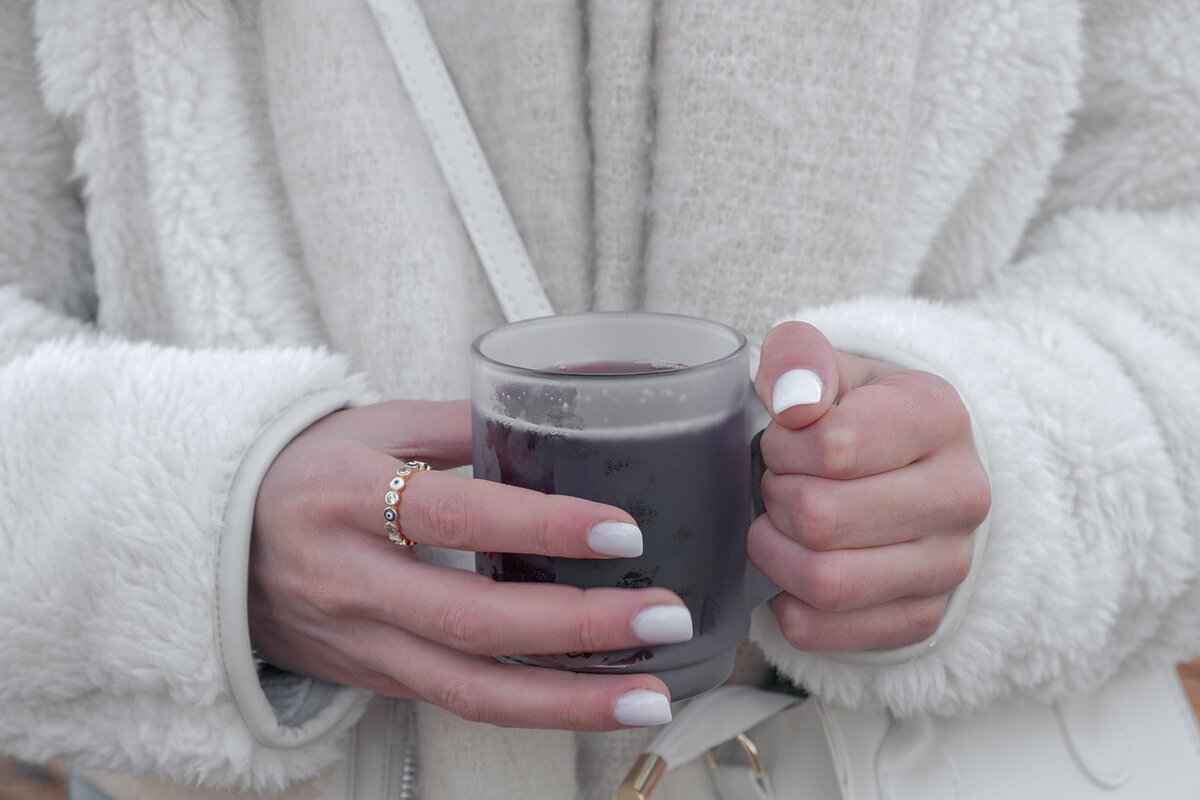
Sparkling Wine Trends to Watch
The world of sparkling wine is constantly evolving, reflecting changing consumer preferences and a growing awareness of health and sustainability. As more people seek unique and personalized experiences, the trends in sparkling wine are shifting to accommodate these desires. Below, we explore some of the most significant trends shaping the sparkling wine landscape today.
Organic and Biodynamic Sparkling Wines
The rise of organic and biodynamic sparkling wines is a trend that is gaining momentum among environmentally conscious consumers. These wines are produced using grapes grown without synthetic pesticides or fertilizers, adhering to strict agricultural practices that prioritize soil health and biodiversity. The benefits of choosing organic wines extend beyond personal health; they also contribute to a healthier planet.
- Health Benefits: Organic wines are often perceived as healthier options, as they contain fewer chemicals and additives.
- Flavor Profile: Many enthusiasts claim that organic wines offer a more authentic and vibrant flavor, reflecting the terroir in which the grapes are grown.
- Notable Producers: Some renowned producers, such as Champagne Pierre Gimonnet and Ruinart, have embraced organic farming practices, making it easier for consumers to find quality organic sparkling options.
Low-Sugar Sparkling Options
As health consciousness rises, the demand for low-sugar sparkling wines has surged. Many consumers are now looking for alternatives that allow them to enjoy the festive experience of sparkling wine without the added sugar and calories. This trend is particularly appealing to those who are mindful of their sugar intake or are following specific dietary plans.
- Understanding Low-Sugar Wines: Low-sugar sparkling wines typically contain less than 5 grams of sugar per liter, making them a great option for those watching their sugar consumption.
- Popular Choices: Brands like La Marca Prosecco and Schramsberg offer low-sugar options that do not compromise on taste, making them perfect for celebrations.
- Health Benefits: Opting for low-sugar sparkling wines can help reduce calorie intake, making it easier to enjoy bubbly without the guilt.
Sustainability in Sparkling Wine Production
Sustainability is becoming a central theme in the production of sparkling wines. Many producers are adopting eco-friendly practices, from vineyard management to packaging. This shift is not only beneficial for the environment but also resonates with consumers who prioritize sustainability in their purchasing decisions.
- Eco-Friendly Practices: Many wineries are implementing renewable energy sources, water conservation methods, and waste reduction strategies.
- Consumer Awareness: As consumers become more informed about the environmental impact of their choices, they are increasingly seeking out brands that demonstrate a commitment to sustainability.
- Innovative Packaging: Sustainable packaging solutions, such as lightweight bottles and recycled materials, are becoming more common, appealing to eco-conscious buyers.
Innovative Flavor Profiles
The sparkling wine industry is also witnessing a surge in innovative flavor profiles, as winemakers experiment with different grape varieties and production methods. This trend is particularly appealing to adventurous consumers looking for something unique.
- New Grape Varieties: Winemakers are exploring lesser-known grape varieties, which can lead to exciting and unexpected flavor combinations.
- Infusions and Blends: Some producers are experimenting with infusions of fruits, herbs, and spices, creating sparkling wines that offer a delightful twist on traditional flavors.
- Global Influence: As international markets expand, winemakers are drawing inspiration from global culinary trends, leading to a fusion of flavors that cater to diverse palates.
In summary, the sparkling wine industry is rapidly adapting to meet the demands of modern consumers. With a focus on organic practices, low-sugar options, sustainability, and innovative flavors, there has never been a better time to explore the diverse world of sparkling wines. By staying informed about these trends, you can make choices that align with your values and enhance your enjoyment of bubbly beverages.
Organic and Biodynamic Sparkling Wines
Organic and biodynamic sparkling wines are gaining traction in the wine industry, reflecting a broader shift towards sustainability and environmental responsibility. As consumers become more aware of their choices, the demand for wines produced with minimal chemical intervention is on the rise. This section will explore the significance of these practices in winemaking, the benefits they offer, and some notable producers within this niche.
What Are Organic and Biodynamic Wines?
Organic wines are made from grapes that are grown without the use of synthetic pesticides, herbicides, or fertilizers. Instead, organic viticulture relies on natural processes and materials to promote soil health and vine vitality. Biodynamic wines take this a step further by incorporating holistic farming practices that consider the vineyard as a self-sustaining ecosystem. This includes using organic compost, planting cover crops, and following lunar cycles for planting and harvesting.
Benefits of Organic and Biodynamic Sparkling Wines
1. Environmental Impact: By avoiding synthetic chemicals, organic and biodynamic practices help preserve biodiversity and reduce pollution. These methods contribute to healthier ecosystems, benefiting not just the vineyards but also surrounding wildlife.
2. Health Considerations: Many consumers are concerned about the potential health risks associated with chemical residues in conventional wines. Organic and biodynamic wines provide a cleaner alternative, appealing to health-conscious individuals.
3. Flavor Profile: Advocates argue that organic and biodynamic wines offer a more authentic expression of the terroir. The absence of chemical additives allows the natural flavors of the grapes to shine through, resulting in unique and complex profiles.
Popular Producers of Organic and Biodynamic Sparkling Wines
Several producers have embraced organic and biodynamic practices, gaining recognition for their exceptional sparkling wines. Some noteworthy names include:
- Champagne Pierre Gimonnet: Known for their commitment to organic farming, they produce elegant Champagnes that reflect the unique characteristics of their vineyards.
- Ruinart: One of the oldest Champagne houses, Ruinart has adopted biodynamic practices in their vineyards, focusing on sustainability while maintaining their signature style.
- Fritz Haag: This German producer is celebrated for its biodynamic Rieslings and sparkling wines, showcasing the benefits of sustainable farming in their offerings.
Consumer Trends and Future Outlook
As awareness of climate change and sustainability increases, more consumers are seeking wines that align with their values. Organic and biodynamic sparkling wines are becoming a preferred choice for many, as they not only offer exceptional quality but also contribute to a healthier planet. The future of this niche looks promising, with more producers likely to adopt these practices.
In conclusion, organic and biodynamic sparkling wines represent a significant trend in the wine industry, merging quality with sustainability. As consumers continue to prioritize environmental responsibility, these wines are well-positioned to thrive in the market, offering both pleasure and peace of mind to those who choose them.
Low-Sugar Sparkling Options
As the health and wellness movement gains momentum, health-conscious consumers are increasingly seeking alternatives to traditional sugary beverages. This shift has led to a remarkable rise in the popularity of low-sugar sparkling wines. These wines not only cater to those looking to reduce their sugar intake but also offer a delightful taste experience without compromising on flavor. In this section, we will explore the reasons behind this growing demand, the benefits of low-sugar sparkling wines, and recommendations for those looking to enjoy bubbly without the extra calories.
One of the main drivers behind the demand for low-sugar sparkling wines is the increasing awareness of the health risks associated with high sugar consumption. Studies have shown that excessive sugar intake can lead to various health issues, including obesity, diabetes, and heart disease. As a result, many consumers are actively searching for healthier beverage options that align with their lifestyle choices.
Low-sugar sparkling wines typically contain less than 5 grams of sugar per liter, making them a preferable choice for those mindful of their sugar intake. These wines are often crafted using specific techniques that enhance their natural flavors while minimizing added sugars. For instance, many producers utilize the Charmat method, which involves fermenting the wine in large tanks rather than in individual bottles. This method can help retain the wine’s fresh fruit flavors while keeping sugar levels low.
When selecting a low-sugar sparkling wine, consumers should look for terms such as “brut nature” or “zero dosage” on the label, indicating that no sugar has been added during the production process. Additionally, wines labeled as “extra brut” typically contain only a small amount of sugar, making them an excellent choice for those who prefer drier options.
Here are some recommendations for low-sugar sparkling wines that are perfect for various occasions:
- Champagne: Look for brands like Champagne Pierre Gimonnet or Champagne Charles Heidsieck, which offer exceptional brut nature options.
- Prosecco: Consider Prosecco Col Fondo, a traditional style that often has lower sugar levels while maintaining a vibrant flavor profile.
- Cava: Cava Brut Nature from producers like Freixenet or Codorníu is another excellent choice for a refreshing and low-sugar bubbly.
In addition to being lower in sugar, these sparkling wines often boast a range of benefits. They can be enjoyed guilt-free at celebrations, paired with a variety of foods, or simply savored on their own. Moreover, many low-sugar sparkling wines are crafted with organic grapes, appealing to the environmentally conscious consumer.
As the trend toward healthier drinking continues to grow, the market for low-sugar sparkling wines is expected to expand. With more producers recognizing the demand, consumers will have access to an even wider selection of options that cater to their taste preferences and health goals. So, whether you’re celebrating a special occasion or simply enjoying a casual evening, choosing a low-sugar sparkling wine can enhance your experience while aligning with your health-conscious lifestyle.
Frequently Asked Questions
- What is the difference between Champagne and Prosecco?
Champagne is a sparkling wine produced exclusively in the Champagne region of France, using specific grapes and methods. Prosecco, on the other hand, hails from Italy and is made primarily from the Glera grape. While Champagne tends to have a more complex flavor profile due to its production method, Prosecco is often lighter and fruitier, making it a popular choice for casual gatherings.
- How should I serve sparkling wine?
To truly enjoy sparkling wine, serve it chilled, ideally between 40-50°F (4-10°C). Use flute glasses to enhance the bubbles and aroma. For a stunning presentation, consider garnishing with fresh fruit or herbs that complement the wine’s flavor. Remember, the right glassware can make a world of difference!
- Can sparkling wine be paired with food?
Absolutely! Sparkling wine is incredibly versatile and pairs well with a variety of dishes. For instance, Champagne complements rich foods like lobster, while Prosecco goes wonderfully with light appetizers and salads. Experimenting with different pairings can elevate your dining experience!
- What are some popular brands of sparkling wine?
There are many notable producers in the sparkling wine world. For Champagne, consider brands like Moët & Chandon and Veuve Clicquot. For Prosecco, look for producers such as La Marca or Mionetto. Each brand has its unique offerings that can cater to different tastes and budgets.
- Are there low-sugar sparkling wine options available?
Yes! The demand for low-sugar sparkling wines is on the rise. Many producers are now creating options that are lower in sugar, making them a great choice for health-conscious consumers. Look for labels that specify “brut nature” or “extra brut” for lower sugar content.

